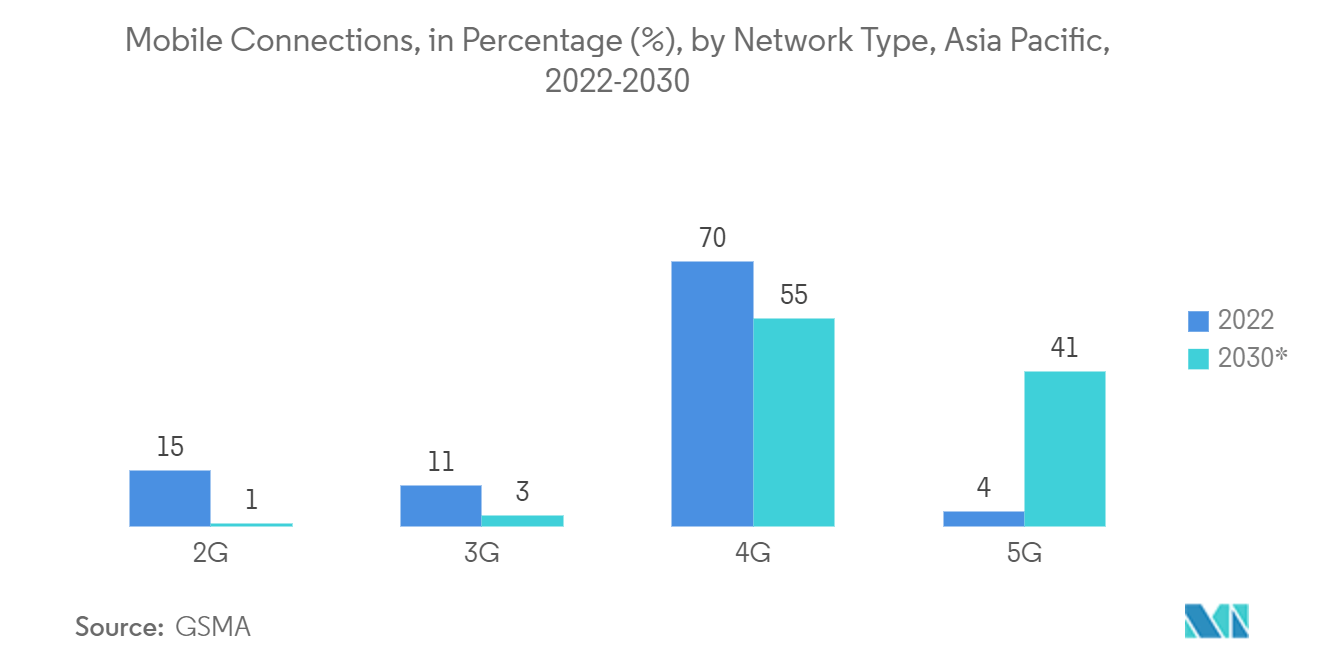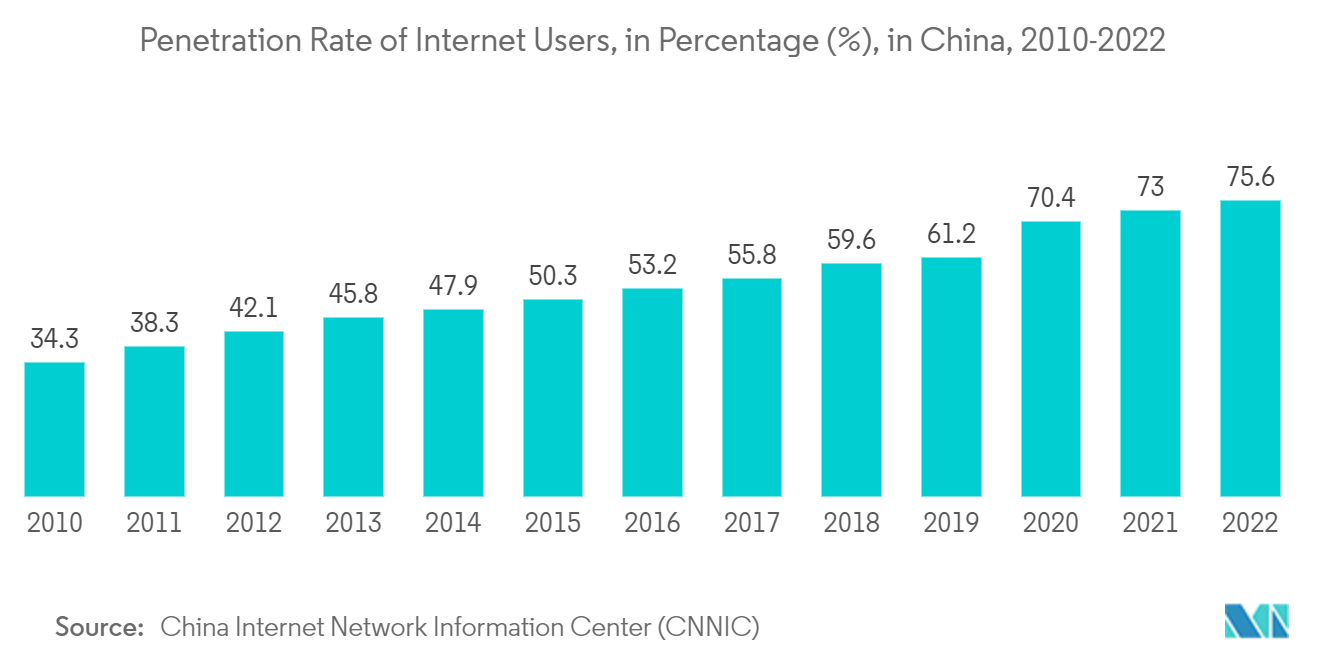Market Trends of Asia-Pacific Distributed Antenna System Industry
Increase in Demand for Public Security Connectivity Drives the Market Growth
- High-rise buildings, tunnels, shopping malls, parking garages, and airports, among others, all have public safety networks vital to people's protection. The DAS( Distributed Antenna System) system standard has seen tremendous national, state, and local law expansion in the last decade.
- Furthermore, legislative regulations and new public safety building norms enacted by the International Code Council and the National Fire Protection Association drive demand for in-building wireless solutions for public safety, including repeaters, bidirectional amplifiers, and active DAS.
- The converged system is not only less expensive to deploy, but it also has natural interaction between cellular and public safety DAS. Furthermore, installing separate units would take up more room than an integrated approach. February 2023, Comba Telecom Systems Holdings Limited, a global wireless solutions provider, introduced its Green Base Station Antenna product series, offered by the new and innovative Helifeed Platform, which significantly increased antenna energy efficiency and optimized antenna energy consumption. Comba Telecom provides forward-thinking Helifeed Green Antennas to help operators achieve global carbon neutrality objectives, with green and low-carbon design principles embedded throughout the product life cycle.
- The communication speed would increase due to rapid advancements in DAS, such as Beamforming and MIMO. There are no choppy or lagging conference calls - connect instantly without interruption. The region also has several partnerships and collaborations, paving the way for further technological evolution. For instance, Nokia and China Mobile have jointly developed this 5G low-cost hybrid distributed indoor system to meet these challenges. The smart indoor coverage system leverages the Nokia 5G Pico Remote Radio Head system, passive DAS antennas, and Bluetooth Low Energy (BLE) technology. This new solution also reduces deployment costs compared to the traditional passive-only DAS systems while delivering greater capacity than DAS. The 5G connections are also increasing rapidly in this region. According to GSMA, 5G mobile connections were estimated to grow from a network share of 4% in 2022 to 41% by 2030.

China is Expected to Dominates the Asia Pacific Distributed Antenna System Market
- Because of its high smartphone usage and early adoption of 5G services in AR/VR, autonomous driving, and distributed antenna system traffic per smartphone, China dominates the Asia Pacific distributed antenna system (DAS) market.
- The DAS market in the region would be driven by the growing number of internet subscribers, increased mobile data traffic, and the increasing emphasis of government offices on improving telecommunications infrastructure to meet consumers' need for seamless connectivity.
- Even the government has stepped in to ensure that telecommunications providers share DAS held by them, ensuring that all operators' consumers have access to the required bandwidth everywhere. These new technologies are widely adopted throughout the region.
- Furthermore, the growing acceptance of indoor distributed antenna systems in the healthcare and industrial verticals and organizations would likely propel the China indoor distributed antenna systems market. Aside from this, the increasing popularity of smartphones is one of the significant driving demands for indoor distributed antenna systems in this region.
- According to CNNIC, China's internet population grew by 35 million in December 2022 compared to a year ago. Over one billion people had internet access, and about 75.6 percent of the Chinese population used the internet. The penetration rate denotes the share of the population that has access to a certain communication medium. The global average internet penetration rate was 64.4 percent as of January 2023. Internet penetration in China has also been above the average rate in Asia Pacific Countries.


